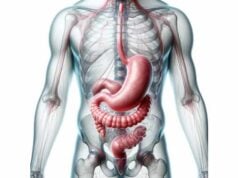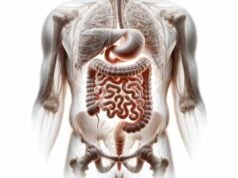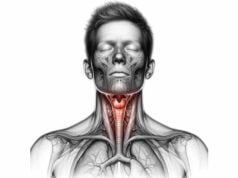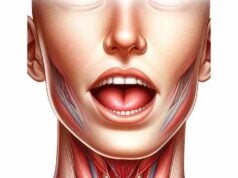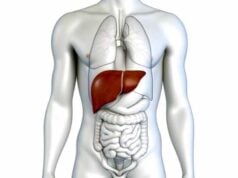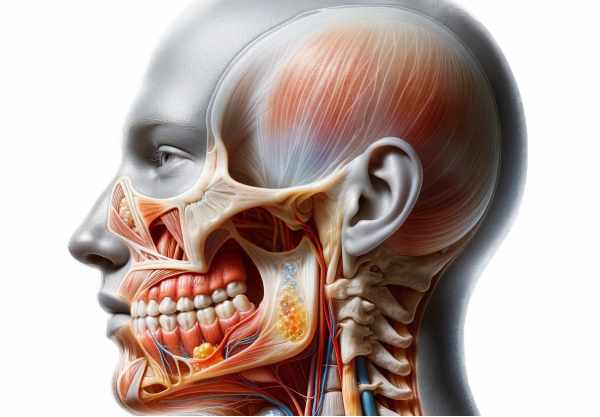
The salivary glands are an essential component of the oral and digestive systems. They secrete saliva—a complex fluid that initiates digestion, maintains oral hygiene, and protects teeth—while also playing a critical role in taste, lubrication, and wound healing. These glands include both major and minor groups, each with unique anatomical and functional characteristics. Their intricate structure, diverse secretions, and neural regulation are vital for maintaining oral and systemic health. This comprehensive guide delves into every facet of salivary gland biology, offering detailed insights into their anatomy, functions, common disorders, diagnostic methods, treatment options, and practical tips for optimal gland health.
Table of Contents
- Anatomical Structure and Histology
- Physiological Roles and Mechanisms
- Salivary Gland Disorders and Conditions
- Diagnostic Techniques and Testing
- Treatment Strategies and Interventions
- Nutritional Support and Supplementation
- Preventative Care and Healthy Practices
- Trusted Resources and Further Reading
- Frequently Asked Questions
Anatomical Structure and Histology
The salivary glands are composed of both major and minor glands, each exhibiting unique structural characteristics and specialized cellular compositions that underlie their secretory functions.
Major Salivary Glands
The three pairs of major salivary glands—the parotid, submandibular, and sublingual glands—are the most prominent and functionally significant sources of saliva.
Parotid Glands
- Location and Overview:
The parotid glands are the largest of the salivary glands. They are situated in the preauricular region, anterior to the ears, and extend down toward the angle of the mandible. - Structural Organization:
Each parotid gland is encapsulated by a tough fibrous layer and divided into superficial and deep lobes by the facial nerve. The gland is composed predominantly of serous acini, which produce a watery, enzyme-rich secretion. - Ductal System:
The Stensen’s duct (parotid duct) originates at the anterior border, traverses over the masseter muscle, pierces the buccinator muscle, and opens into the oral cavity opposite the second upper molar. - Histology:
Microscopically, the gland’s serous acini consist of pyramidal cells with abundant zymogen granules, while interstitial connective tissue and adipose tissue provide structural support.
Submandibular Glands
- Location and Structure:
Located in the submandibular triangle beneath the floor of the mouth, these glands consist of a superficial lobe and a deep lobe that wraps around the posterior border of the mylohyoid muscle. - Ductal Anatomy:
The Wharton’s duct emerges from the gland’s medial aspect, courses forward along the floor of the mouth, and opens at the sublingual caruncle near the tongue’s frenulum. - Secretions:
The submandibular glands secrete a mixed fluid—combining serous and mucous components—although serous cells predominate. - Histological Characteristics:
The acini are arranged in lobules separated by fibrous septa, with both serous and mucous cells visible upon staining.
Sublingual Glands
- Location and Features:
The smallest of the major glands, the sublingual glands are situated beneath the mucosa of the mouth’s floor, anterior to the submandibular glands, and reside in the sublingual fossa. - Ductal Arrangement:
These glands feature multiple small ducts (Rivinus’ ducts), with some converging into the larger submandibular duct and others opening independently via the Bartholin’s duct. - Secretory Profile:
They predominantly produce mucous saliva, which is thicker and more lubricative, aiding in the initial stages of digestion. - Histological Overview:
The glandular tissue exhibits clusters of mucous acini intermingled with smaller serous elements and is supported by a delicate network of connective tissue.
Minor Salivary Glands
Scattered throughout the oral cavity, minor salivary glands are numerous but small in size. They are found in the lips, cheeks, palate, tongue, and pharynx.
- Function and Distribution:
Although individually small, collectively they secrete a continuous supply of mucous saliva that maintains moisture and provides a protective barrier for the oral mucosa. - Histology:
These glands consist primarily of mucous acini, though some serous components may be present, depending on the location.
Vascular and Neural Supply
The salivary glands are richly vascularized and innervated, ensuring efficient secretion and regulation.
- Blood Supply:
- Parotid Glands: Receive blood from the superficial temporal and maxillary arteries.
- Submandibular Glands: Supplied by branches of the facial and lingual arteries.
- Sublingual Glands: Supplied by the sublingual and submental arteries.
- Nerve Supply:
Salivary secretion is modulated by both the parasympathetic and sympathetic branches of the autonomic nervous system. - Parasympathetic Innervation:
- For the parotid, it is provided by the glossopharyngeal nerve via the otic ganglion.
- The submandibular and sublingual glands receive parasympathetic fibers from the facial nerve via the submandibular ganglion.
- Sympathetic Innervation:
- Originates from the superior cervical ganglion, affecting the composition and viscosity of saliva.
Development
Salivary glands develop from the oral ectoderm during embryogenesis. The parotid glands form first, followed by the submandibular and sublingual glands. Their development involves intricate epithelial-mesenchymal interactions that shape the acinar and ductal structures.
Physiological Roles and Mechanisms
The primary role of the salivary glands is to produce saliva, a multifunctional fluid essential for oral and digestive health. Saliva supports numerous physiological processes that extend far beyond mere lubrication.
Digestive Initiation
- Enzymatic Digestion:
Saliva contains the enzyme amylase, which begins the breakdown of complex carbohydrates (starches) into simpler sugars. Additionally, lingual lipase helps in the digestion of lipids. - Lubrication and Bolus Formation:
Mucous components in saliva moisten food, facilitating mastication and bolus formation. This lubrication is crucial for smooth passage through the esophagus and subsequent digestion.
Oral Health and Dental Protection
- Antimicrobial Properties:
Saliva is rich in antimicrobial proteins such as lysozyme, lactoferrin, and immunoglobulin A (IgA). These components help control the growth of oral bacteria and prevent infections. - Buffering Capacity:
By neutralizing acids produced by bacterial metabolism, saliva helps maintain the oral pH, protecting teeth from demineralization and decay. - Remineralization:
Saliva contains calcium and phosphate ions, which contribute to the repair and strengthening of tooth enamel, thereby counteracting early dental erosion.
Sensory and Protective Functions
- Taste Facilitation:
Saliva dissolves food substances, enabling taste buds to detect and process flavors effectively. - Wound Healing:
Growth factors present in saliva promote the healing of minor injuries and mucosal abrasions. - Clearance of Debris:
The constant flow of saliva helps wash away food particles and bacteria, reducing the risk of dental plaque and subsequent infections.
Speech and Oral Function
- Moisture for Articulation:
Adequate saliva production ensures that the oral mucosa remains moist, facilitating smooth movement of the tongue and lips, which is essential for clear speech. - Temperature Regulation:
Saliva also aids in regulating the temperature of the oral cavity, creating an optimal environment for taste and digestion.
Regulation of Saliva Secretion
Saliva production is controlled by the autonomic nervous system:
- Parasympathetic Stimulation:
This enhances the secretion of watery, enzyme-rich saliva in response to food-related stimuli (sight, smell, taste). - Sympathetic Stimulation:
Under stress or during dehydration, sympathetic signals reduce saliva volume, resulting in thicker, more mucous-rich secretions.
Circadian Rhythm
Salivary secretion follows a circadian rhythm, with higher production during waking hours and lower production during sleep. This pattern helps maintain oral moisture and digestive readiness during the day while conserving energy and moisture at night.
Salivary Gland Disorders and Conditions
Various disorders can affect the salivary glands, leading to discomfort, impaired function, and other systemic effects. Understanding these conditions is vital for early detection and effective treatment.
Sialolithiasis (Salivary Stones)
Sialolithiasis is characterized by the formation of calcified stones within the salivary ducts or gland parenchyma.
- Pathophysiology:
Stones form due to precipitation of calcium salts, especially in the submandibular glands where saliva is more alkaline and has a higher calcium concentration. - Symptoms:
Patients may experience pain, swelling, and tenderness in the affected gland—often exacerbated during meals when saliva production increases. - Complications:
Obstruction can lead to recurrent infections and abscess formation.
Sialadenitis (Inflammation)
Sialadenitis involves inflammation of a salivary gland, frequently due to infection or ductal obstruction.
- Acute Sialadenitis:
Typically caused by bacterial infections (e.g., Staphylococcus aureus), it presents with sudden onset of pain, swelling, redness, and fever. - Chronic Sialadenitis:
Often results from recurrent infections or persistent ductal obstruction, leading to intermittent gland swelling and discomfort over an extended period.
Mumps
Mumps is a viral infection primarily affecting the parotid glands.
- Clinical Presentation:
It is characterized by painful swelling of one or both parotid glands, accompanied by fever, headache, muscle aches, and malaise. - Complications:
Although often self-limiting, mumps can lead to orchitis, oophoritis, meningitis, and in rare cases, encephalitis.
Sjögren’s Syndrome
Sjögren’s syndrome is an autoimmune disorder in which the immune system attacks the salivary (and lacrimal) glands.
- Symptoms:
Chronic dry mouth (xerostomia) and dry eyes are hallmark features, along with difficulty swallowing, increased dental decay, and sometimes systemic manifestations. - Complications:
The chronic lack of saliva can lead to rampant dental caries, oral infections, and an increased risk of lymphoma.
Salivary Gland Tumors
Tumors can develop in both major and minor salivary glands.
- Benign Tumors:
The most common benign tumor is pleomorphic adenoma, which typically affects the parotid gland. These tumors are usually slow-growing and painless. - Malignant Tumors:
Malignant variants such as mucoepidermoid carcinoma and adenoid cystic carcinoma can be aggressive, causing pain, facial nerve dysfunction, and difficulty swallowing. Early detection and management are critical.
Xerostomia (Dry Mouth)
Xerostomia is a condition of reduced saliva production, which can lead to a dry, sticky oral environment.
- Causes:
Medications (e.g., antihistamines, antidepressants), systemic diseases (such as diabetes), radiation therapy, and aging. - Symptoms:
Dry mouth, difficulty chewing or swallowing, increased dental decay, and a burning sensation. - Management:
Treatment focuses on saliva substitutes, stimulants, and lifestyle modifications.
Sialorrhea (Excessive Saliva)
Sialorrhea refers to the overproduction or drooling of saliva.
- Etiology:
Neurological disorders (such as Parkinson’s disease and cerebral palsy), medications, and oral infections can contribute. - Symptoms:
Excessive drooling, difficulty swallowing, and potential social embarrassment. - Treatment:
Options include behavioral therapies, anticholinergic medications, and in severe cases, botulinum toxin injections. - Surgical Options:
In refractory cases, surgical procedures like salivary duct ligation or gland excision may be considered.
Cysts
Salivary gland cysts are fluid-filled sacs that form as a result of ductal obstruction or developmental anomalies.
- Types:
Mucoceles, which are common in minor salivary glands, and ranulas, typically found beneath the tongue. - Symptoms:
Swelling and discomfort in the affected area, which may interfere with eating or speaking if large.
Diagnostic Techniques and Testing
A precise diagnosis of salivary gland disorders involves a combination of clinical assessments, laboratory tests, and imaging studies. These methods allow healthcare providers to determine the nature and extent of the disorder and to formulate an appropriate treatment plan.
Clinical Assessment
- Medical History and Symptom Review:
A detailed history is taken, focusing on pain, swelling, dry mouth, difficulties in chewing or swallowing, and any recurrent infections. - Physical Examination:
Palpation of the glands is performed to detect masses, tenderness, or signs of infection. Inspection of the oral cavity and ductal openings is also essential.
Laboratory Tests
- Salivary Flow Measurement (Sialometry):
Quantifies saliva production, aiding in the diagnosis of xerostomia. - Microbial Cultures:
Samples of saliva or purulent material are cultured to identify bacterial or viral pathogens, guiding antibiotic or antiviral therapy. - Autoantibody Testing:
Blood tests for anti-SSA (Ro) and anti-SSB (La) can help diagnose autoimmune conditions like Sjögren’s syndrome. - Cytological Analysis:
Fine-needle aspiration (FNA) or ductal lavage may be used to examine cells from a gland or duct for signs of neoplasia or inflammation.
Imaging Studies
- Ultrasound:
A non-invasive and readily available tool, ultrasound is used to visualize the gland’s architecture, detect stones, cysts, and abscesses, and guide interventional procedures. - Sialography:
This technique involves injecting a contrast agent into the salivary ducts followed by X-ray imaging, which provides a detailed view of the ductal system and helps identify obstructions. - Magnetic Resonance Imaging (MRI):
MRI offers high-resolution images of soft tissues, making it valuable for assessing tumors, deep abscesses, and inflammatory conditions. - Computed Tomography (CT) Scan:
CT scans are useful for identifying calcifications, stones, and structural abnormalities, especially when combined with contrast-enhanced studies. - Scintigraphy:
This nuclear imaging technique assesses gland function by tracking the uptake and excretion of a radiotracer.
Endoscopic and Advanced Techniques
- Sialendoscopy:
A minimally invasive procedure using a small endoscope to visualize the ductal system, allowing for both diagnosis and treatment (e.g., stone removal). - 3D Reconstruction Imaging:
Advanced imaging techniques that reconstruct 3D models from CT or MRI data, providing detailed anatomical views that aid in surgical planning. - Optical Coherence Tomography (OCT):
A non-invasive method that provides high-resolution images of salivary gland tissue microstructure, useful for early detection of pathological changes.
Therapeutic Approaches and Treatments
Treatment for salivary gland disorders is tailored to the specific condition and its severity. Management strategies range from conservative measures and medication to minimally invasive procedures and surgical interventions.
Treatment of Sialolithiasis (Salivary Stones)
- Conservative Management:
Increasing fluid intake, gland massage, and the use of sour candies to stimulate saliva flow may help expel small stones naturally. - Medications:
Pain relievers and anti-inflammatory drugs help alleviate discomfort. Antibiotics are prescribed if secondary infection occurs. - Minimally Invasive Procedures:
- Sialendoscopy: A flexible endoscope is used to locate and remove stones with minimal discomfort and rapid recovery.
- Extracorporeal Shock Wave Lithotripsy (ESWL): Shock waves fragment larger stones, allowing their fragments to pass naturally.
- Surgical Intervention:
If minimally invasive techniques are unsuccessful, surgical removal via a small incision in the duct or gland may be necessary.
Management of Sialadenitis (Inflammation)
- Antibiotic Therapy:
Bacterial infections are treated with appropriate antibiotics based on culture sensitivity. - Supportive Care:
Increased hydration, warm compresses, and gland massage improve saliva flow and reduce inflammation. - Surgical Drainage:
In cases where abscess formation occurs, prompt surgical drainage is essential to resolve the infection.
Treatment of Sjögren’s Syndrome
- Symptomatic Relief:
Use of artificial saliva, lubricating eye drops, and regular hydration can alleviate dry mouth and eyes. - Stimulant Medications:
Pilocarpine and cevimeline may be prescribed to enhance saliva production. - Systemic Therapy:
Immunosuppressants and biologics (such as rituximab) may be used to manage systemic autoimmune symptoms.
Management of Salivary Gland Tumors
- Surgical Excision:
The primary treatment for both benign and malignant tumors involves the surgical removal of the affected gland. For parotid tumors, careful dissection to preserve the facial nerve is critical. - Radiation Therapy:
Postoperative radiation may be used to reduce the risk of recurrence in malignant cases. - Chemotherapy:
In advanced or metastatic cases, chemotherapy may be employed, often in combination with radiation.
Treatment of Xerostomia (Dry Mouth)
- Saliva Substitutes:
Over-the-counter artificial saliva products and moisturizing gels help alleviate dry mouth symptoms. - Saliva Stimulants:
Sugar-free gum or candies can stimulate natural saliva production. - Medications:
Pilocarpine and cevimeline are effective in increasing saliva flow. - Lifestyle Modifications:
Avoiding caffeine, alcohol, and tobacco, which can exacerbate dry mouth, is essential.
Management of Sialorrhea (Excessive Saliva)
- Behavioral and Speech Therapy:
Techniques such as biofeedback and speech therapy can help patients control excessive drooling. - Pharmacologic Interventions:
Anticholinergic medications (e.g., glycopyrrolate, scopolamine) reduce saliva production. - Botulinum Toxin Injections:
Botox injections into the salivary glands can temporarily inhibit nerve signals and reduce saliva output. - Surgical Options:
In refractory cases, surgical procedures like salivary duct ligation or gland excision may be considered.
Nutritional Support and Supplementation
Diet and nutrition significantly influence the health and function of the salivary glands. A well-balanced diet enriched with essential nutrients supports glandular function, reduces inflammation, and promotes oral health. In some cases, targeted supplementation may also enhance salivary secretion and tissue repair.
Key Nutrients
- Vitamin C:
A powerful antioxidant that aids in immune function and tissue repair, vitamin C helps protect salivary glands from oxidative damage. - Omega-3 Fatty Acids:
Found in fish and flaxseed oil, omega-3s reduce inflammation and support overall cellular health. - Vitamin D:
Essential for immune regulation, vitamin D may help lower the risk of infections and support glandular function. - B Vitamins:
B6 and B12 are critical for metabolic processes and nerve health, which indirectly support proper salivary secretion. - Magnesium:
This mineral is involved in numerous biochemical reactions and aids in maintaining cellular integrity and hormonal balance. - Zinc:
Zinc plays a vital role in immune function and cell repair. Adequate zinc levels support the maintenance of healthy salivary tissues.
Antioxidants
Antioxidants help counteract oxidative stress, which can damage salivary gland cells:
- Vitamin E:
Helps protect cell membranes from free radical damage. - Selenium:
An essential trace element with antioxidant properties that contributes to overall cellular health. - Glutathione:
The master antioxidant, glutathione, is critical for detoxification and cellular repair.
Herbal Supplements
Herbal remedies may offer natural support for salivary gland function:
- Echinacea:
Known for its immune-boosting effects, Echinacea may help prevent and treat infections. - Licorice Root:
With its anti-inflammatory and antimicrobial properties, licorice root can alleviate symptoms of dry mouth and promote glandular health. - Ginger:
Ginger’s anti-inflammatory effects may help reduce swelling and pain associated with salivary gland conditions.
Hydration and Electrolytes
Maintaining proper hydration is essential for optimal salivary gland function. Electrolyte solutions or supplements can help ensure that the body remains well-hydrated, thereby supporting consistent saliva production.
Probiotics
Probiotics promote a healthy balance of oral microflora. By reducing the prevalence of pathogenic bacteria, they can help prevent infections and inflammation in the salivary glands.
Integrating Nutritional Strategies
Adopting a diet rich in fruits, vegetables, whole grains, lean proteins, and healthy fats, combined with the targeted use of supplements, creates a robust nutritional foundation that supports salivary gland health and overall oral function.
Preventative Care and Healthy Practices
Maintaining optimal salivary gland function involves a proactive approach that includes lifestyle modifications, regular health screenings, and mindful habits. These strategies can help prevent the onset of salivary gland disorders and promote overall oral and systemic health.
Dietary and Lifestyle Modifications
- Hydration:
Consistent water intake is crucial for preventing dry mouth and ensuring efficient saliva production. - Balanced Diet:
A nutrient-rich diet supports immune function and glandular health. Foods high in antioxidants and anti-inflammatory compounds are especially beneficial. - Regular Exercise:
Physical activity improves circulation and overall health, indirectly supporting salivary gland function. - Weight Management:
Maintaining a healthy weight helps reduce systemic inflammation and the risk of metabolic disorders that can affect salivary gland function.
Oral Hygiene and Behavioral Practices
- Good Oral Hygiene:
Regular brushing, flossing, and dental check-ups prevent oral infections and maintain a healthy microbial balance. - Chewing Sugar-Free Gum:
This practice can stimulate saliva production and prevent dry mouth. - Avoid Irritants:
Limit or avoid smoking, excessive alcohol, and caffeine, which can exacerbate dryness and irritation. - Use of Humidifiers:
Adding moisture to indoor air, especially during dry seasons, can help maintain oral mucosal hydration.
Stress and Sleep Management
- Stress Reduction:
Chronic stress can negatively impact saliva production. Techniques like meditation, yoga, and deep breathing exercises are effective at reducing stress. - Sleep Hygiene:
Adequate sleep supports overall health and helps maintain the natural circadian rhythm of saliva production.
Regular Health Screenings
- Dental and Medical Check-Ups:
Routine examinations can help detect early signs of salivary gland disorders, allowing for prompt intervention. - Monitoring Symptoms:
Keeping track of any changes in oral health, such as persistent dryness, swelling, or pain, is essential for early diagnosis.
By integrating these preventative strategies into daily life, you can help maintain the proper function of the salivary glands, enhance oral health, and reduce the risk of related disorders.
Trusted Resources and Further Reading
For those seeking to deepen their understanding of salivary gland health, the following resources offer reliable information, research findings, and practical guidance:
Books
- “The Mouth-Body Connection: How Your Oral Health Affects Your Whole Body” by Dr. Gerald P. Curatola and Diane Reverand:
This book explores the interconnection between oral health and systemic well-being, highlighting the importance of healthy salivary glands. - “Essentials of Oral and Maxillofacial Surgery” by M. Anthony Pogrel, Karl-Erik Kahnberg, and Lars Andersson:
A comprehensive guide that includes detailed chapters on salivary gland disorders and their surgical management. - “Textbook of Salivary Gland Disorders” by Robert L. Witt:
An in-depth resource covering the diagnosis, treatment, and management of various salivary gland conditions.
Academic Journals
- The Journal of Urology:
While focused on urology, this journal also publishes relevant research on salivary gland tumors and related conditions. - Prostate Cancer and Prostatic Diseases:
Though mainly on prostate topics, it occasionally covers comparative studies on glandular tumors and diagnostic techniques. - Oral Surgery, Oral Medicine, Oral Pathology, and Oral Radiology:
A peer-reviewed journal offering extensive research on oral and salivary gland disorders.
Mobile Apps
- MySwallowing Aid:
This app provides exercises and tracking for individuals with swallowing difficulties, indirectly supporting salivary gland function. - Urology Care Foundation’s Urology Health:
While focused on urology, it also offers educational materials relevant to oral and glandular health. - WebMD:
A comprehensive health resource that includes information on salivary gland disorders, treatments, and expert advice.
Frequently Asked Questions on Salivary Glands
What is the primary function of the salivary glands?
The salivary glands produce saliva, which initiates digestion, lubricates food for swallowing, protects teeth through buffering and remineralization, and helps cleanse the oral cavity.
How do salivary glands contribute to oral health?
Saliva contains enzymes, antimicrobial proteins, and essential minerals that help break down food, prevent infections, neutralize acids, and repair tooth enamel, all of which contribute to maintaining a healthy oral environment.
What causes dry mouth (xerostomia)?
Xerostomia can be caused by medications, systemic diseases, radiation therapy, or aging, leading to decreased saliva production, discomfort, difficulty in swallowing, and increased risk of dental problems.
How are salivary gland stones (sialolithiasis) treated?
Treatment options include conservative management with increased fluid intake, gland massage, sialendoscopy to remove stones, extracorporeal shock wave lithotripsy (ESWL) to break them up, or surgery if necessary.
What lifestyle changes can improve salivary gland health?
Staying hydrated, practicing good oral hygiene, maintaining a balanced diet rich in antioxidants, avoiding irritants like tobacco and excessive caffeine or alcohol, and using sugar-free gum to stimulate saliva production can all support healthy salivary gland function.
Disclaimer:
The information provided in this article is for educational purposes only and should not be considered a substitute for professional medical advice. Always consult a healthcare provider for any concerns regarding your health.
Please share this article on Facebook, X (formerly Twitter), or your preferred social media platform to help spread awareness about salivary gland health and modern treatment strategies.

